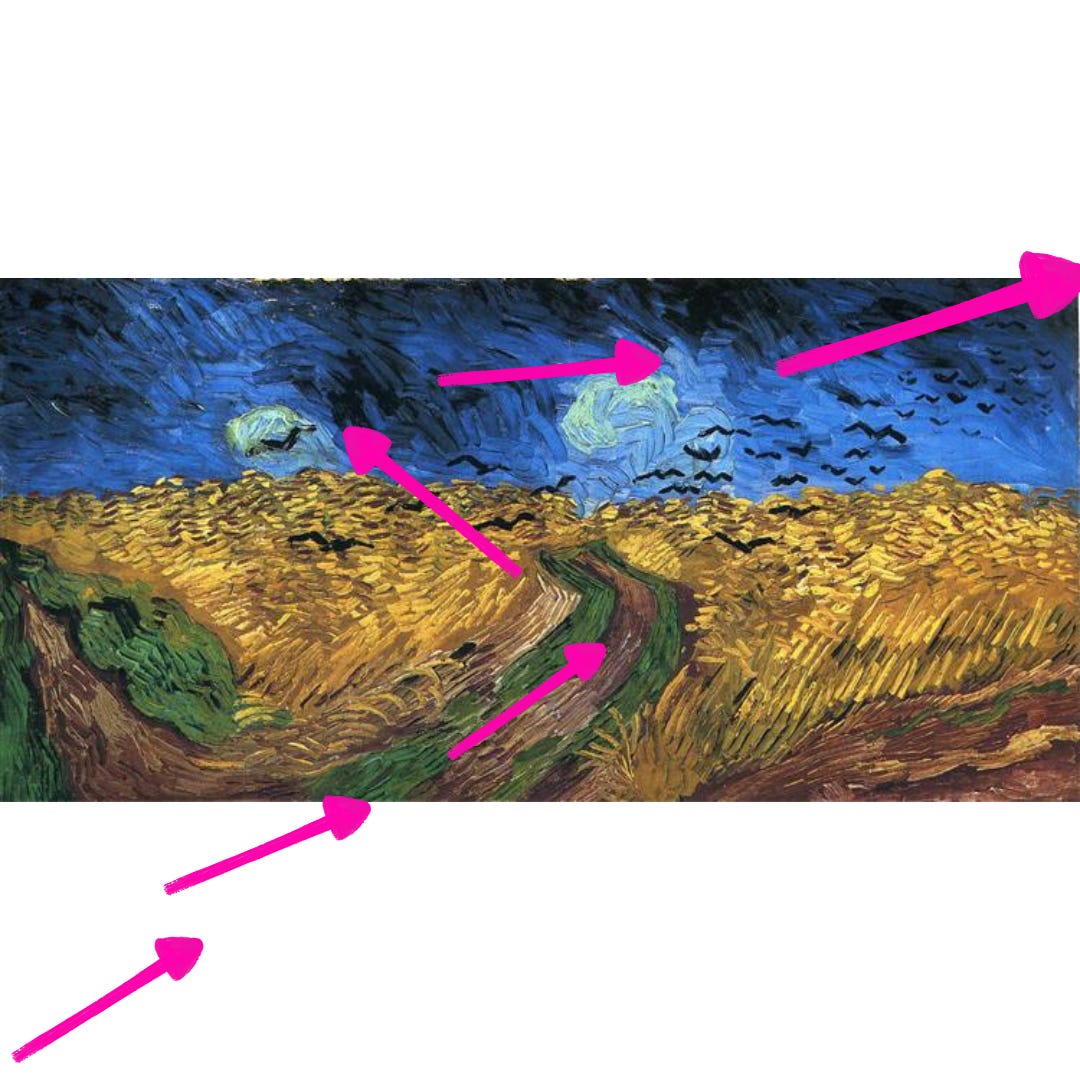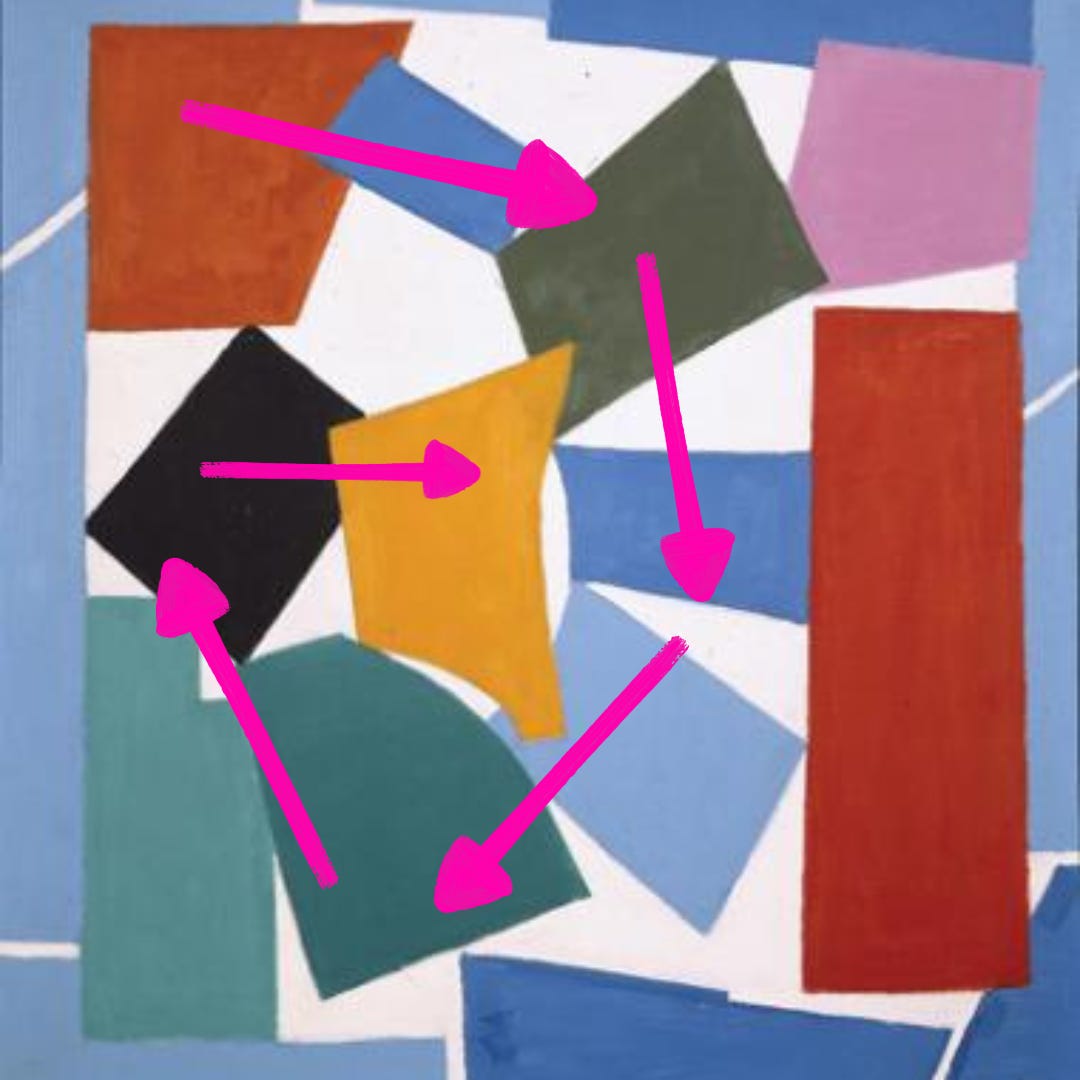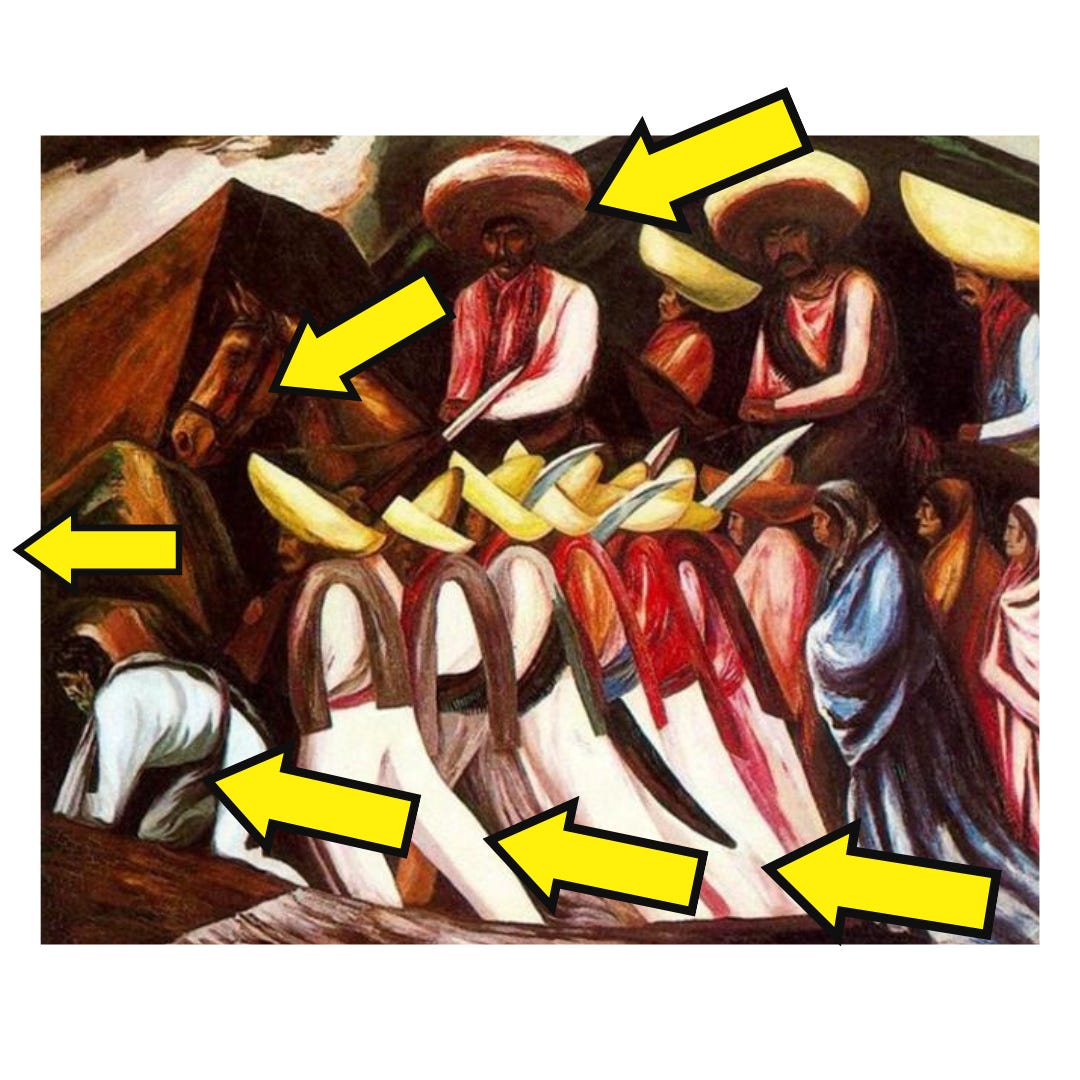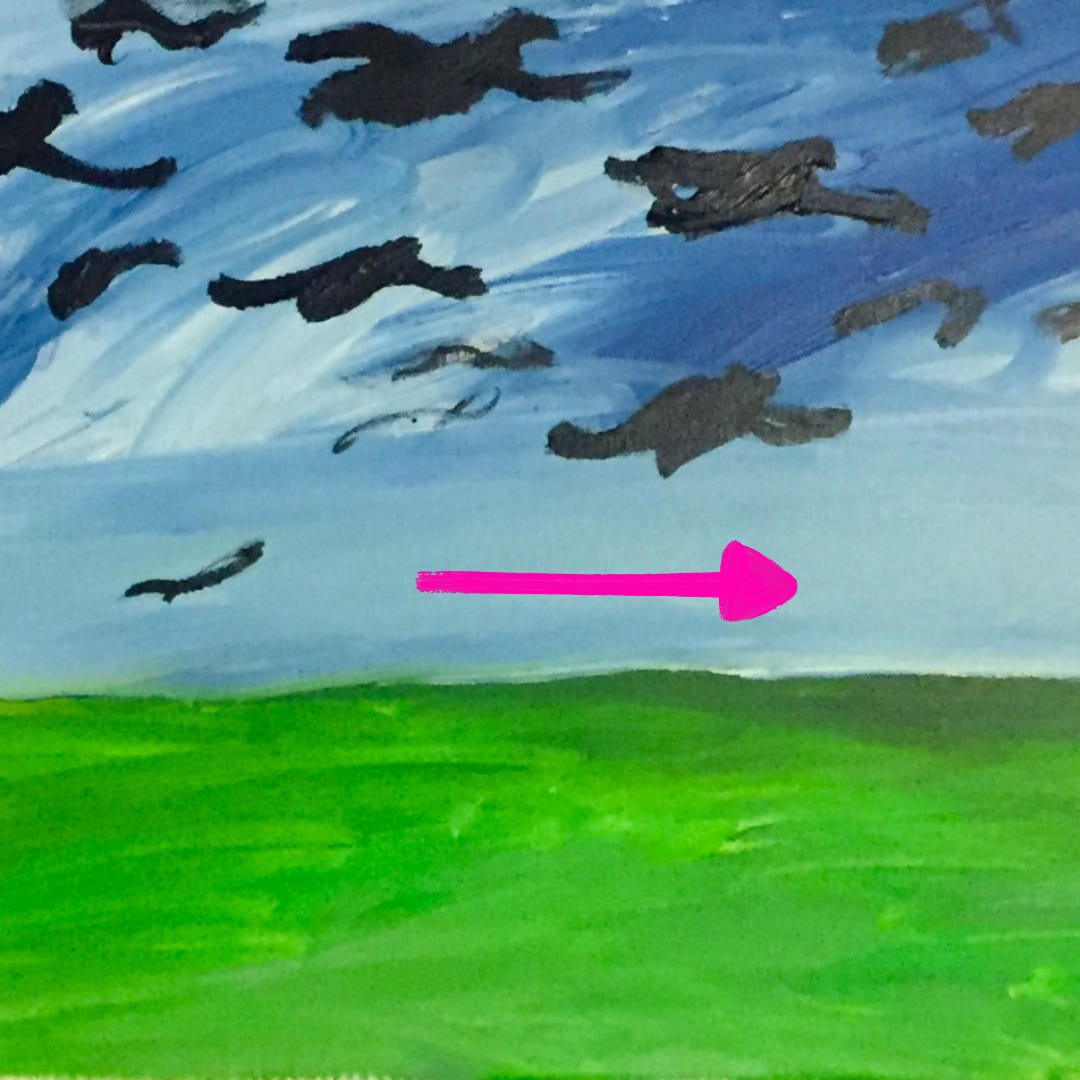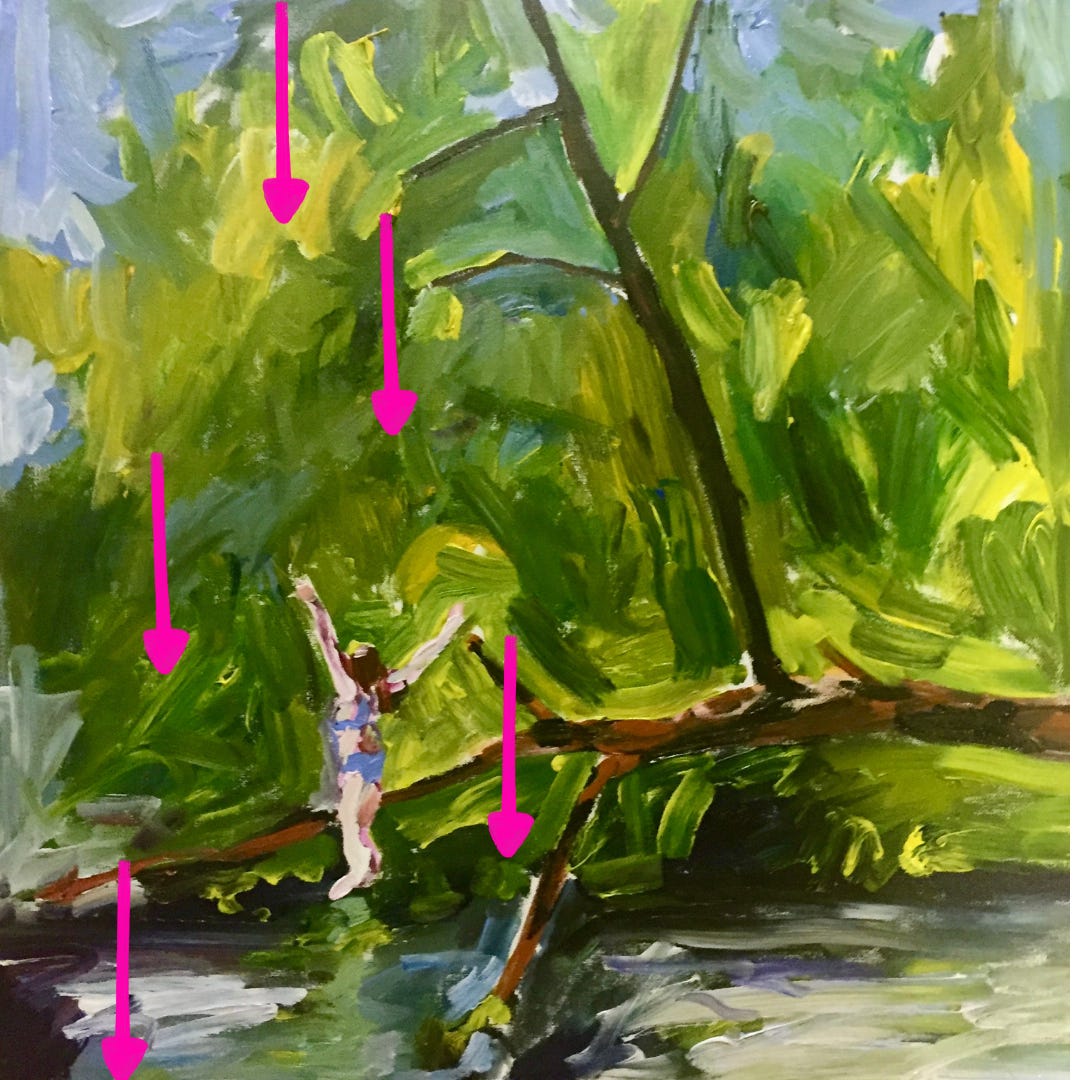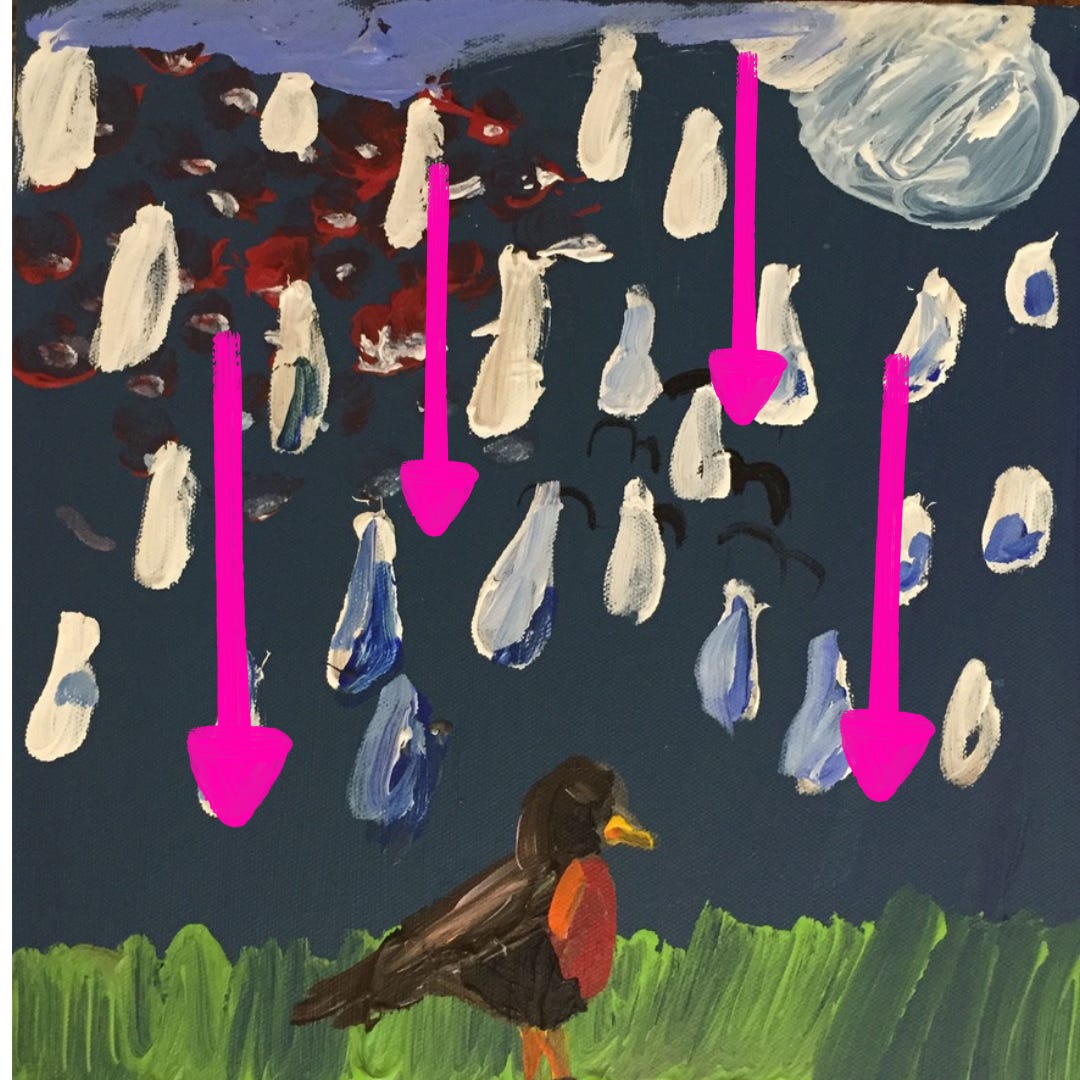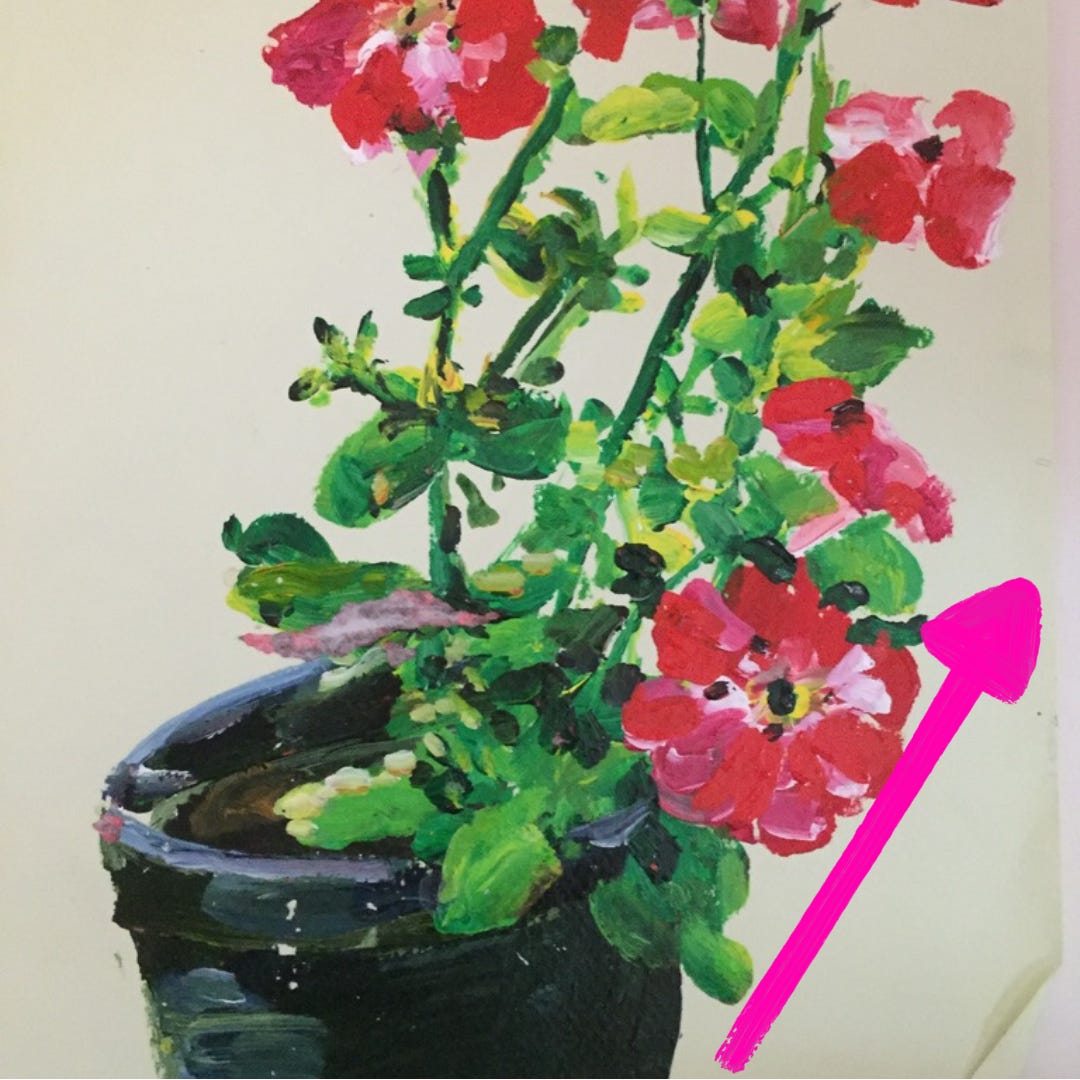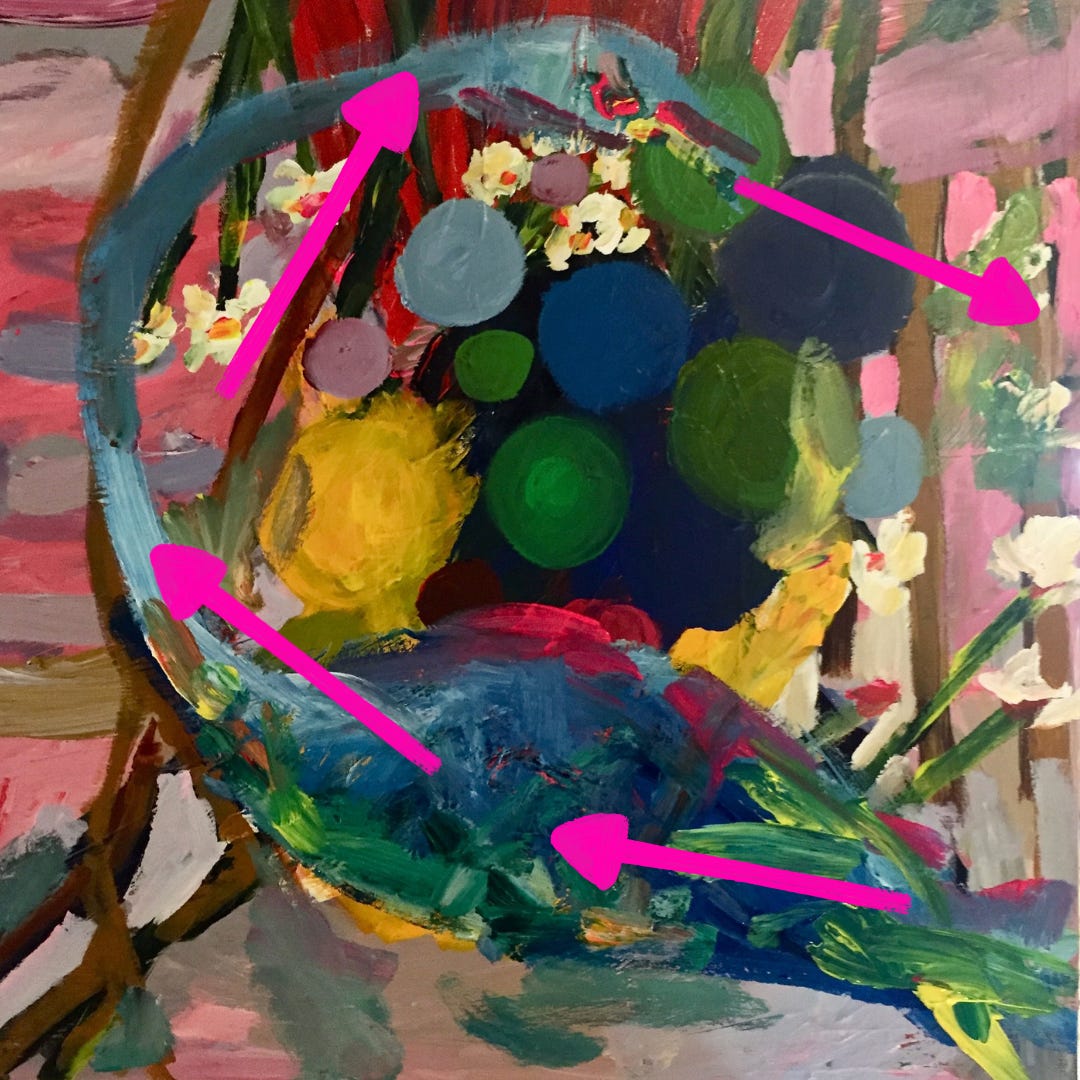Getting great at space and composition means getting great at moving eyeballs across the page, left to right, top to body, side to side, in a straight line, a circle or diagonally.
Let’s look at a few examples of a few of the greats doing this well.
Vincent Van Gogh, Wheatfield with Crows, 1890
Here we see Van Gogh move the viewer’s eyes from the front of the scene to the back, from the foreground, through the middle ground, and into the background. He uses a few classic landscape painting tricks to move our eyes. The path goes from thick to thin and recreates the way our eyes see such paths in the real world. The diagonals in the wheat fields are another painting trick, tilts like that in a painting help us to keep traveling backwards.
But you don’t need to be painting a landscape to move our eyes in such a dramatic way. Here Alma Thomas tilts her shapes and places her colors expertly so that our eyes can’t help but travel in a swirl formation.
Watusi (Hard Edge) Alma Woodsey Thomas
And Jose Clemente Orozco has all of his figures facing in the same direction in order to drag our eyes to the left of the canvas.
Zapatista's Marching Jose Clemente Orozco, 1931
Here are three exercises to help you place with space in the same way. For these I’ll use some of my old, in some cases VERY old, paintings as examples.
EXERCISE 1:
Paint a painting that moves the eye across the page to the right. This might be a flock of birds flying in formation or swimmers crossing a river, like the below. It could be a series of waves moving across the ocean to the right, a field of sunflowers all tilting to the right or a bunch of Boy Scouts marching across the page.
EXERCISE 2:
Move the eyes down by painting something dropping. This might be like my paintings below of somebody jumping from a tree into a lake and raindrops falling onto a robin. Maybe it is a water balloon being dropped from a bridge or flowers being tossed into a river in a memory of somebody special. Whatever it is, your goal is to capture the movement down and the weight of the object as it plummets through space.
EXERCISE 3:
Paint a still object or still life but despite that lack of movement somehow figure out how to get some eye movement across the page. In the painting below, I leveraged the natural lean of the flowers to move the eyes to the right. You could also do this by arranging a cup or pencils with one pencil leaving the pack and tilting to the right or a bunch of bananas where one banana has partially been ripped from the cluster.
While it isn’t exactly a still thing, I painted this bird with its head twisting around its body in order to move the eyes in a circle around the page. You could do this with any animal, maybe it is the natural curve of your dog’s body when it is asleep, the long neck of a giraffe. But you could also get this circular movement made by a coiled rope, a whirlpool or a lion’s tail.
Every time you practice moving the eye across the page you will understand a little better how to fill the space, and filling the space is half the battle of making a great painting. Also, next time you go to a museum and explore the paintings, I guarantee that you will enjoy your viewing experience more because you will be more aware of how you are looking at the art and how the composition is moving your eyes.
Thanks for reading and if you enjoy these exercises, you can find many more in my book, Painting Can Save Your Life : How and Why We Paint.
xo Sara




